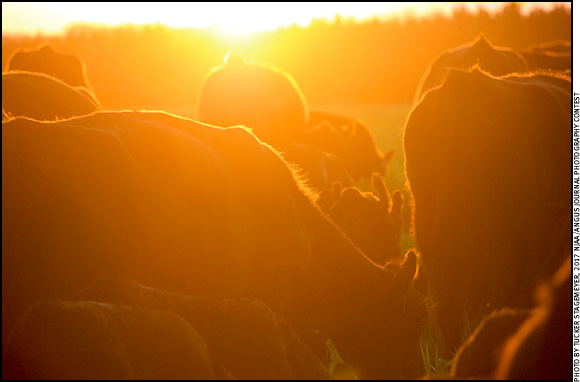
Avoid Heat Stress When Breeding Cattle
Think ahead for reproductive success.
Julie Walker, beef specialist at South Dakota State University, says working cattle in the hot weather can be detrimental when doing heat synchronization and artificial insemination (AI) programs. Any time you have to move cattle or work cattle, it pays to watch weather forecasts and try to choose a day that won’t be during a heat wave. Sometimes, however, producers need to get cattle in for a heat synchronization program and timing is crucial, regardless of the weather.
More people are going to April-May calving to match forage with nutritional needs of the lactating cow and reduce labor at calving, not having to worry about cold weather in February-March, Walker says, so now they have to deal with the heat instead. They are breeding cows in July and August — which are often the hottest months.
This means that if they are putting CIDRs® in for synchronization and have to pull the CIDRs at a given time, then they are under the clock and may have to get those cows in when it’s very hot. If they are going to do a fixed-time AI in the morning, they are probably going to be pulling CIDRs at 7 p.m. the evening before, says Walker.
If the cattle are not close to corrals and CIDRs must be pulled at 7 p.m., this might mean cattle need to be gathered at 4 or 5 p.m., and that’s still during the hottest part of the day.
They won’t be able to rest, cool down or hydrate because the calves must be sorted off so the cows can go through the chute. This often equates to three hours of working those cattle in the heat of the day, she says.
A person needs to think about the heat, and plan ahead. It might be a situation where cattle should be moved closer to the corrals in the morning while it’s still cool, Walker explains, so they aren’t being driven far to bring them into the facility that evening. Then they are refreshed and watered before you start working them, and maybe you’ll only be moving them for 15 or 20 minutes to get into the working facility.
When moving and working cattle this time of year, make sure there is ample clean, fresh water for them, so they won’t have any hesitation about drinking and getting rehydrated.
Walker warns that if there’s a fountain-type tank, make sure there’s enough water pressure to keep it full. If there are calves with those cows, make sure the calves can reach the water if it’s in a tank.
“We always need to think about heat stress and take care to minimize it while moving or working cattle, because heat stress can impact reproduction. A lot of the risk is during early pregnancy for cows, and heat also has a negative impact on bull fertility,” says Walker.
“Another thing to take into consideration if you are doing heat detection during hot weather is that cows won’t be very active during the heat of the day; they will be lying around in the shade if possible and trying to stay cool,” she says.
You’ll have your best luck checking cows in the early morning or late evening, and they may be most active during the night.
“When breeding cows that late in the summer when it’s hot, it really helps with the heat detection to use patches on them to know which ones have been ridden,” she says. “We may not be out there during the coolest part of the day/night to see the riding activity, so we can use that tool to help us identify the cows that need to be inseminated.”

Editor’s Note: Heather Smith Thomas is a cattlewoman and freelance writer from Salmon, Idaho.






